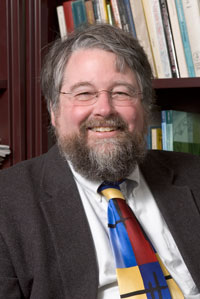AgBioResearch scientist contends sustainability solutions need the power of networks
Michigan State University scientists are studying how to harness the power of social networks to better communicate sustainability science.
 The choices an individual makes about environmental issues are affected by family, friends and others in that person's social network. Michigan State University scientists are studying how to harness the power of social networks to better communicate sustainability science.
The choices an individual makes about environmental issues are affected by family, friends and others in that person's social network. Michigan State University scientists are studying how to harness the power of social networks to better communicate sustainability science.
"Instead of trying to communicate with thousands of people, we can be more effective by using the structure of social networks to spread information," said Thomas Dietz, AgBioResearch scientist and sociology and environmental science and policy professor at MSU. "By communicating with the people who influence decisions in a network, we can have a dialogue with them and learn what is important to those groups. The influencers then spread the information to the rest of the network."
Dietz and Adam Henry, assistant professor of public administration at West Virginia University, organized a symposium, "Social Networks and Sustainability," at this year's annual meeting of the American Association for the Advancement of Science. Symposium speakers were Henry; Ken Frank, MSU professor of measurement and quantitative methods, and fisheries and wildlife; and Mrill Ingram, of the University of Wisconsin.
Frank develops mathematical models of social networks, which allow scientists to analyze the effects of social networks using universal, formal terms.
"My work makes explicit what we see in social network diagrams," Frank said. "For example, the diagrams can be used to represent how new knowledge diffuses through a network of stakeholders, and then the influence model can be used to estimate the size of the network effect relative to other effects such as exposure to government reports and popular media."
Frank's models are helpful for communicating information, and this research has many practical applications, Dietz said.
"His selection model tells us where people in a network get their information," he said. "So now we know whom to contact to share information. Because we don't know how to deal with all the sustainability challenges we face, we have to learn as we go. So we monitor what is and isn't effective and then get the new information out to the networks."



 Print
Print Email
Email




